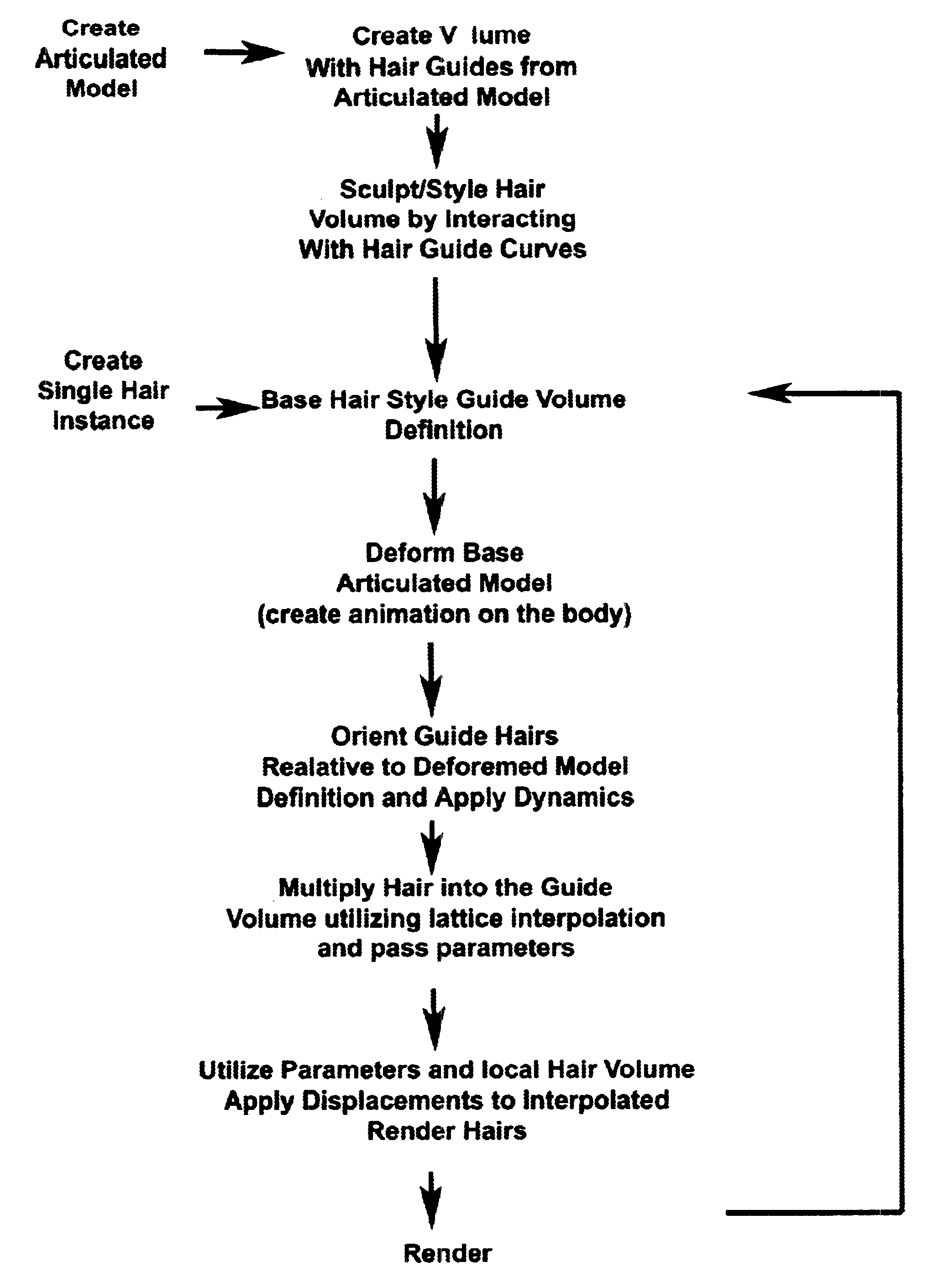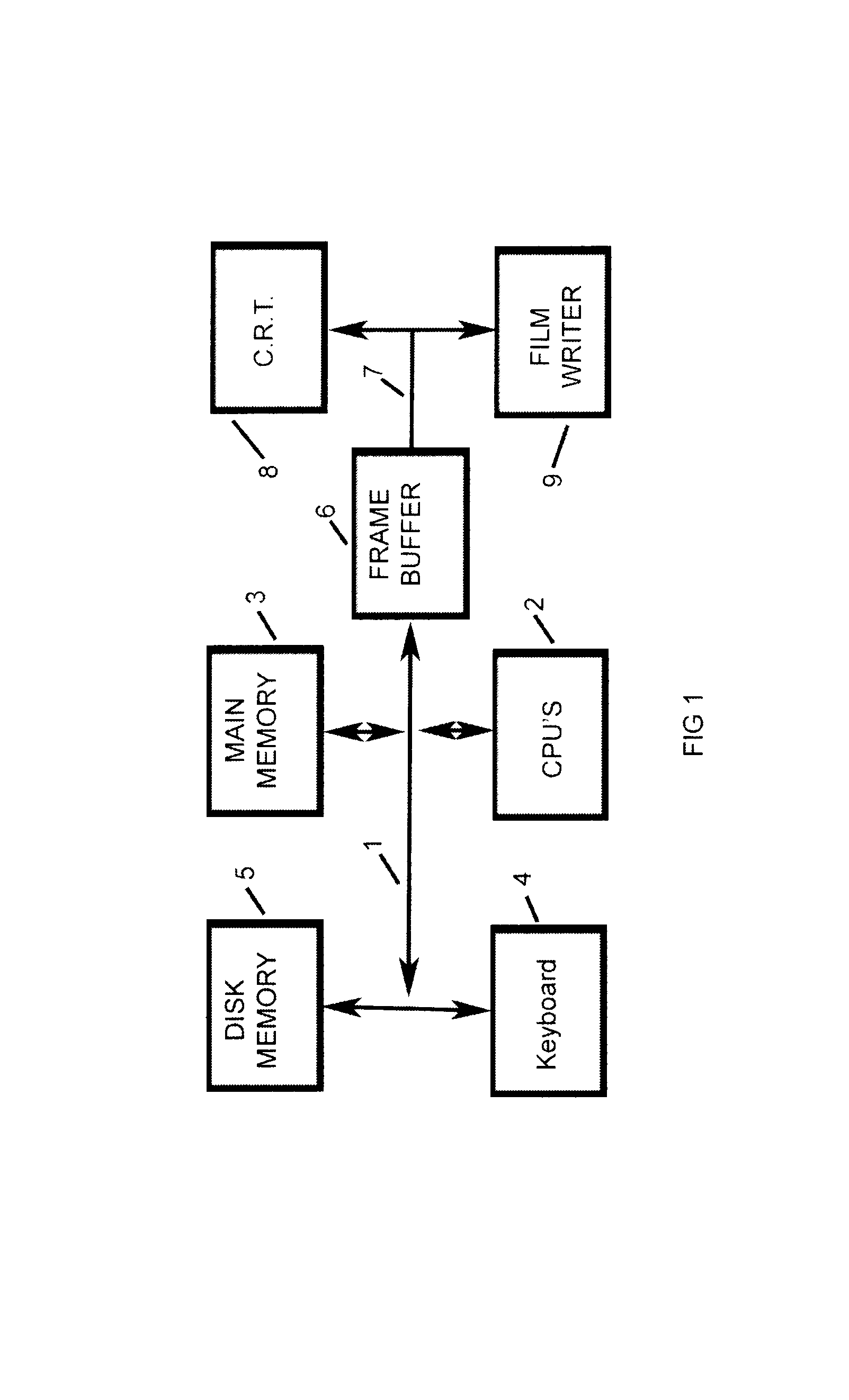Hair generation and other natural phenomena with surface derived control volumes in computer graphics and animation
a technology of which is applied in the field of hair generation and other natural phenomena with surface derived control volumes in computer graphics and animation, can solve the problems of not providing for the rest of the hair, computer graphics simulation of large systems, and how to move the geometry using physical simulation
- Summary
- Abstract
- Description
- Claims
- Application Information
AI Technical Summary
Problems solved by technology
Method used
Image
Examples
Embodiment Construction
FIG. 1 shows a computer system suitable for carrying out the invention. A main bus 1 is connected to one or more CPU's 2 and a main memory 3. Also connected to the bus are a keyboard 4 and large disk memory 5. The frame buffer 6 receives output information from the main bus and sends it through another bus 7 to either a CRT or another peripheral which writes the image directly onto film. To illustrate the present invention we will describe its use in the animation of a character, Zeke and another character `Fiasco`--a fluffy dog.
The first step involves the production of a 3 dimensional perpendicular lattice by extending linear segments from each vertex of the underlying surface (FIG. 3). This technique can be seen in FIG. 5 where linear segments, 10, in FIG. 5 are extended from the arbitrary surface, 12, to form guide columns, 14. Then, the next step involves connecting each level of each column to it's corresponding neighbors by simply using the underlying surface's connectivity to...
PUM
 Login to View More
Login to View More Abstract
Description
Claims
Application Information
 Login to View More
Login to View More - R&D
- Intellectual Property
- Life Sciences
- Materials
- Tech Scout
- Unparalleled Data Quality
- Higher Quality Content
- 60% Fewer Hallucinations
Browse by: Latest US Patents, China's latest patents, Technical Efficacy Thesaurus, Application Domain, Technology Topic, Popular Technical Reports.
© 2025 PatSnap. All rights reserved.Legal|Privacy policy|Modern Slavery Act Transparency Statement|Sitemap|About US| Contact US: help@patsnap.com



